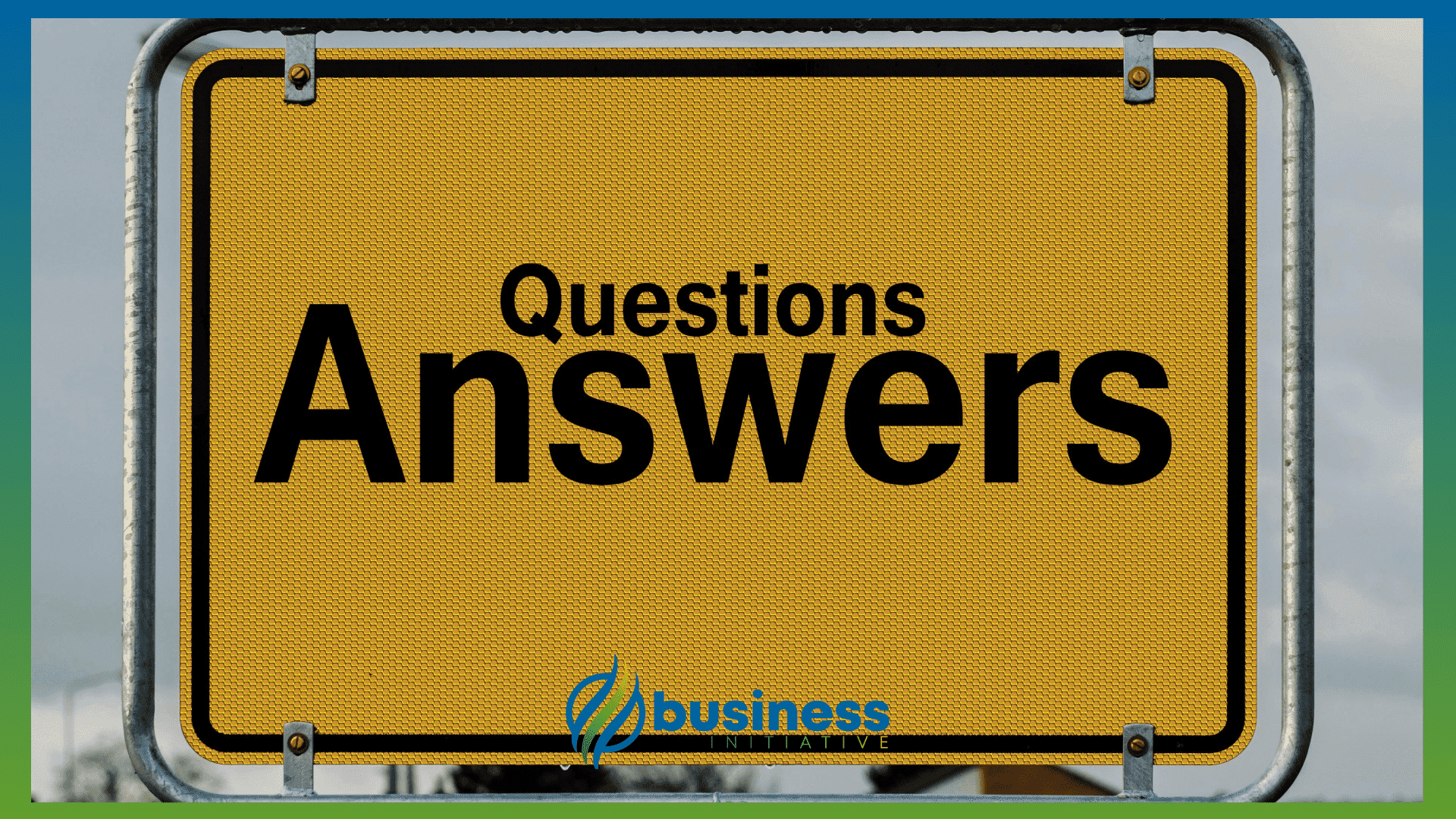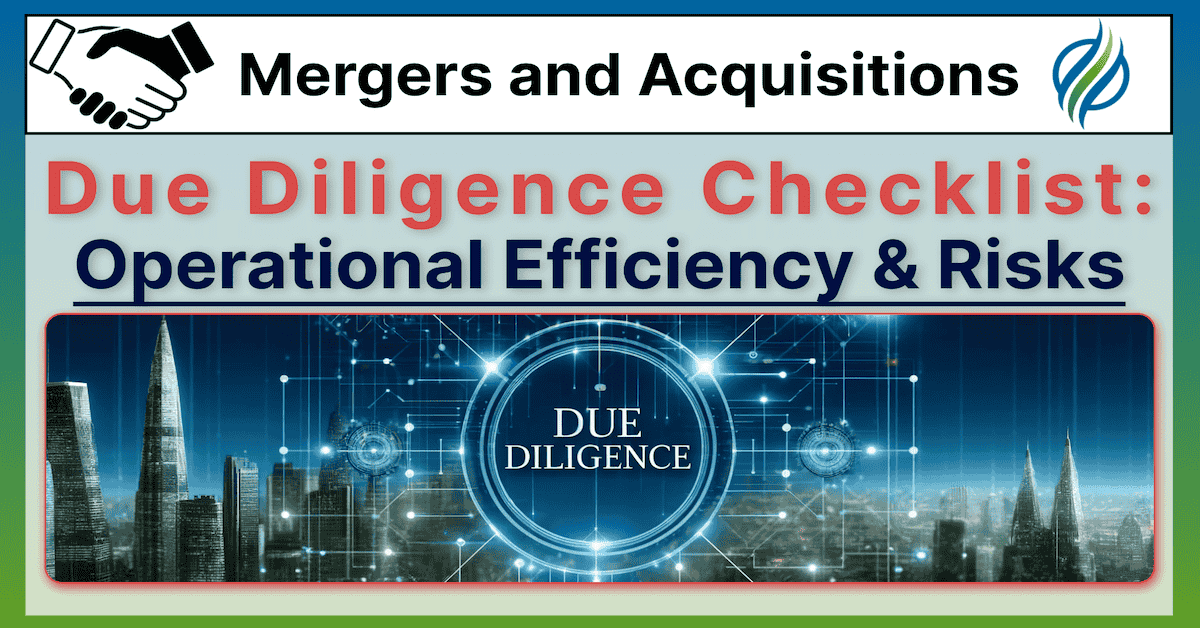In this article, we explore the critical aspects of optimizing operational efficiency and managing risks during M&A due diligence.
We provide practical steps to evaluate workflows, IT systems, and internal controls, helping you identify potential risks and improvement areas.
This guide is important for anyone involved in M&A activities.
It offers actionable insights to streamline processes, enhance cybersecurity, and ensure robust internal controls.
By following our detailed steps, you can make informed decisions and minimize operational disruptions post-merger.
 Key Takeaways
Key Takeaways
- Map and Analyze Workflows: Identify inefficiencies and bottlenecks in operational processes to improve productivity and reduce costs.
- Assess IT Systems: Ensure IT infrastructure is up-to-date and cybersecurity measures effectively protect against threats.
- Evaluate Internal Controls: Strong internal controls and risk management practices are essential for financial accuracy and compliance.
- Benchmark Against Standards: Compare the company’s processes and controls with industry standards to identify areas for improvement.
- Reflect on Self-Assessment Questions: Use our targeted questions to evaluate operational efficiency, IT systems, and internal controls comprehensively.
To get the most out of this article, take your time with each section.
Reflect on the self-assessment questions.
Use the resources provided to deepen your understanding.
This approach will equip you with the knowledge and tools needed for thorough due diligence.
Ready to enhance your M&A due diligence process?
Dive in and explore each crucial aspect in detail.
Keep reading to transform your approach and ensure a seamless transition.
 Table of Contents
Table of Contents
Understanding the operational efficiency and risks of a target company is crucial in the due diligence process.
This involves a detailed analysis of the company’s workflows, IT systems, cybersecurity measures, and internal control systems to pinpoint areas for improvement and identify potential risks.
By evaluating these components, acquirers can ensure the company operates smoothly and effectively, minimizing operational disruptions post-acquisition.
This section will guide you through the key steps and self-assessment questions necessary to thoroughly evaluate operational efficiency and risks.

➤ MORE: Check out the FULL Due Diligence Checklist here
Analyze Operational Workflows and Efficiency
Operational workflows are the backbone of a company’s daily operations.
Understanding these workflows helps identify inefficiencies, bottlenecks, and areas for improvement, ensuring the company operates smoothly and effectively.
Improving these workflows can significantly enhance productivity and reduce costs, making it a critical area in M&A due diligence.
Practical Benefits:
-
Identifying inefficiencies allows for targeted improvements that can boost overall productivity.
-
Streamlined workflows can reduce operational costs and enhance service delivery.
-
Enhanced operational efficiency makes the target company more attractive and valuable.
Importance:
-
Detailed analysis of operational workflows ensures the acquirer understands the operational capabilities and challenges.
-
Identifying inefficiencies early allows for the implementation of corrective measures pre-acquisition.
-
Effective workflows are crucial for maintaining business continuity post-merger.
Practical Steps:
-
Map Out Operational Workflows: Create detailed flowcharts or diagrams of the company’s key operational processes. Identify all steps involved, from raw materials to finished products or services.
-
Identify Bottlenecks and Inefficiencies: Analyze each step to identify bottlenecks, delays, or inefficiencies. Assess how these issues impact overall productivity and costs.
-
Evaluate Process Improvement Initiatives: Review any initiatives the company has undertaken to improve operational efficiency. Assess the effectiveness of these initiatives and their impact on operations.
-
Benchmark Against Industry Standards: Compare the company’s operational workflows and efficiency metrics against industry standards. Identify areas where the company lags behind or excels compared to competitors.
Self-Assessment Questions:
-
What are the key operational workflows in the company?
-
Where are the bottlenecks and inefficiencies in these workflows?
-
How do these inefficiencies impact overall productivity and costs?
-
What initiatives has the company undertaken to improve operational efficiency?
-
How does the company’s operational efficiency compare to industry standards?
Evaluate IT Systems and Cybersecurity Measures
Information technology (IT) systems and cybersecurity measures are critical components of a company’s infrastructure.
Evaluating these systems ensures they are reliable, secure, and capable of supporting the company’s operations.
Strong IT systems and robust cybersecurity are essential for protecting sensitive information and maintaining operational continuity.
Practical Benefits:
-
Reliable IT systems enhance operational efficiency and support business growth.
-
Effective cybersecurity measures protect against data breaches and cyber threats.
-
Up-to-date IT infrastructure can improve overall system performance and reduce downtime.
Importance:
-
Evaluating IT systems helps identify potential risks and vulnerabilities.
-
Ensuring strong cybersecurity measures safeguards the company’s data and reputation.
-
Reliable IT infrastructure is crucial for maintaining seamless operations post-merger.
Practical Steps:
-
Review IT Infrastructure: Assess the company’s IT infrastructure, including hardware, software, and network systems. Identify any outdated or unsupported systems that may need upgrading.
-
Analyze IT System Performance: Evaluate the performance and reliability of the IT systems. Identify any recurring issues or downtimes that impact operations.
-
Assess Cybersecurity Measures: Review the company’s cybersecurity policies, protocols, and practices. Assess the effectiveness of these measures in protecting against cyber threats.
-
Conduct Vulnerability Assessments: Perform or review recent vulnerability assessments and penetration tests. Identify any critical vulnerabilities and the steps taken to mitigate them.
-
Evaluate Data Management Practices: Assess how the company manages, stores, and protects data. Ensure compliance with data protection regulations and best practices.
Self-Assessment Questions:
-
How up-to-date is the company’s IT infrastructure?
-
What are the main performance and reliability issues with the IT systems?
-
How effective are the company’s cybersecurity measures?
-
What critical vulnerabilities have been identified, and how have they been addressed?
-
How does the company manage and protect its data?
Assess Internal Control Systems and Procedures
Internal control systems and procedures are essential for ensuring accurate financial reporting, compliance with laws and regulations, and efficient operations.
Assessing these systems helps identify weaknesses and areas for improvement.
Effective internal controls reduce the risk of fraud, errors, and non-compliance, making them a vital part of M&A due diligence.
Practical Benefits:
-
Strong internal controls enhance financial accuracy and reliability.
-
Effective procedures ensure compliance with laws and regulations.
-
Robust controls reduce the risk of fraud and operational errors.
Importance:
-
Assessing internal controls ensures the acquirer understands the company’s compliance framework.
-
Identifying weaknesses allows for the implementation of corrective measures pre-acquisition.
-
Effective internal controls are crucial for maintaining financial integrity post-merger.
Practical Steps:
-
Review Internal Control Policies: Obtain and review the company’s internal control policies and procedures. Ensure these policies are comprehensive and up-to-date.
-
Evaluate Control Effectiveness: Assess the effectiveness of internal controls through audits and testing. Identify any weaknesses or gaps in the control environment.
-
Examine Compliance with Internal Controls: Review compliance reports and audit findings related to internal controls. Ensure that any issues identified have been addressed and resolved.
-
Assess Risk Management Practices: Evaluate the company’s risk management practices, including how risks are identified, assessed, and mitigated. Ensure that risk management is integrated into the internal control framework.
-
Benchmark Against Best Practices: Compare the company’s internal control systems and procedures against industry best practices. Identify areas for improvement and implement necessary changes.
Self-Assessment Questions:
-
How comprehensive and up-to-date are the company’s internal control policies?
-
How effective are the internal controls in place?
-
What weaknesses or gaps exist in the control environment?
-
How does the company ensure compliance with internal controls?
-
How are risks identified, assessed, and mitigated within the company?
-
How do the company’s internal control systems compare to industry best practices?
FAQs - Frequently Asked Questions About Due Diligence into Operational Efficiency and Risk

Why is operational efficiency important in M&A due diligence?
It ensures smooth operations post-merger.
Identifying inefficiencies can reduce costs and improve productivity.
Learn More...
Operational efficiency is crucial as it helps ensure that the company can maintain or improve its performance post-merger.
By identifying and addressing inefficiencies during due diligence, the acquiring company can implement necessary improvements early on.
This can lead to reduced operational costs, enhanced productivity, and a smoother integration process.
For example, by streamlining workflows and removing bottlenecks, companies can avoid disruptions and maintain continuous operations.
How can I assess a company’s IT infrastructure during M&A due diligence?
Evaluate the hardware, software, and network systems.
Check for outdated systems and assess cybersecurity measures.
Learn More...
Start by reviewing the company’s existing IT infrastructure, including all hardware, software, and network systems.
Identify any outdated or unsupported systems that may require upgrading to avoid future issues.
Assess the performance and reliability of these systems to identify any recurring issues or downtimes that could impact operations.
Evaluate the company’s cybersecurity measures to ensure they are adequate for protecting against current threats.
Perform or review recent vulnerability assessments and penetration tests to identify any critical vulnerabilities and steps taken to mitigate them.
What are the key components of internal control systems in M&A due diligence?
Internal control policies, compliance, and risk management.
Evaluate the effectiveness and compliance of these controls.
Learn More...
Key components include comprehensive internal control policies, effective control procedures, and robust risk management practices.
Review the company’s internal control policies to ensure they are comprehensive and up-to-date.
Assess the effectiveness of these controls through audits and testing to identify any weaknesses or gaps.
Evaluate how well the company adheres to these controls by reviewing compliance reports and audit findings.
Ensure that risk management practices are integrated into the internal control framework, and compare these practices against industry best practices to identify areas for improvement.
How do I benchmark a company’s operational efficiency against industry standards?
Compare key performance metrics with industry averages.
Identify areas where the company lags behind or excels.
Learn More...
Benchmarking involves comparing the company’s key operational metrics, such as productivity rates, cost efficiency, and workflow efficiency, against industry standards.
Gather industry data from reliable sources and analyze how the company’s metrics stack up against these benchmarks.
Identify areas where the company is performing well and those where it falls short.
Use this analysis to highlight potential improvement areas and to develop targeted strategies for bringing the company’s performance up to or above industry standards.
- Compare productivity rates
- Analyze cost efficiency
- Evaluate workflow efficiency
- Gather industry data
- Identify strengths and weaknesses
- Develop improvement strategies
Benchmarking helps in understanding the competitive position of the company and identifying best practices from industry leaders.
What are common cybersecurity measures to look for in M&A due diligence?
Firewall protections, encryption, and regular security audits.
Effective cybersecurity policies and employee training.
Learn More...
Common cybersecurity measures include robust firewall protections, encryption of sensitive data, and regular security audits to identify vulnerabilities.
Evaluate the company’s cybersecurity policies, including protocols for data protection, access controls, and incident response plans.
Assess the effectiveness of employee training programs on cybersecurity awareness and best practices.
Review recent vulnerability assessments and penetration tests to ensure the company has taken steps to mitigate identified risks.
Ensure the company complies with relevant data protection regulations and follows industry best practices for cybersecurity.
How can I identify bottlenecks in a company's operational workflows?
Map out and analyze each step of the process.
Look for delays, inefficiencies, and repetitive tasks.
Learn More...
Start by creating detailed flowcharts or diagrams of the company’s key operational processes, from raw materials to finished products or services.
Analyze each step to identify any points where delays or inefficiencies occur.
Look for repetitive tasks or unnecessary steps that can be streamlined or eliminated.
Gather data on cycle times and throughput rates to quantify the impact of these bottlenecks on overall productivity and costs.
Engage with employees and managers involved in these processes to get insights into practical challenges and potential solutions.
In Summary…
Understanding and optimizing operational efficiency and managing risks are pivotal in the M&A due diligence process.
This article has provided you with a comprehensive guide to evaluating workflows, IT systems, and internal controls, ensuring you can identify potential risks and areas for improvement effectively.
By applying the practical steps outlined, you can streamline operations, enhance cybersecurity, and ensure robust internal controls, leading to a more successful merger or acquisition.
Using the information in this guide, you gain the ability to:
-
Identify and address inefficiencies in operational workflows.
-
Ensure IT infrastructure is up-to-date and cybersecurity measures are robust.
-
Strengthen internal controls to enhance financial accuracy and compliance.
-
Benchmark processes against industry standards to identify improvement areas.
-
Conduct thorough self-assessments to evaluate operational efficiency, IT systems, and internal controls.
By leveraging these insights, you can make informed decisions, minimize operational disruptions, and ensure a seamless transition during the M&A process.
Ready to take the next step in optimizing your M&A due diligence process?
Schedule a consultation call with Business Initiative or use our contact form to get personalized guidance and support.
Stay informed and ahead of the curve by subscribing to our Initiative Newsletter.
For more insights and updates, follow us on X.
Sources
- Operational Efficiency Best Practices: For understanding and improving operational efficiency.
- Workflow Management Tools: Tools to help manage and optimize workflows.
- Industry Benchmarking Tools: For comparing operational metrics against industry standards.
- IT Infrastructure Assessment Guide: Insights on evaluating IT infrastructure.
- Cybersecurity Best Practices: Guidelines for ensuring robust cybersecurity measures.
- Data Management Resources: Information on data management best practices.
- Internal Controls Best Practices: For ensuring effective internal controls.
- Risk Management Frameworks: Guidelines for effective risk management.
- Compliance and Internal Audit Resources: Resources for ensuring compliance and effective internal audits.


